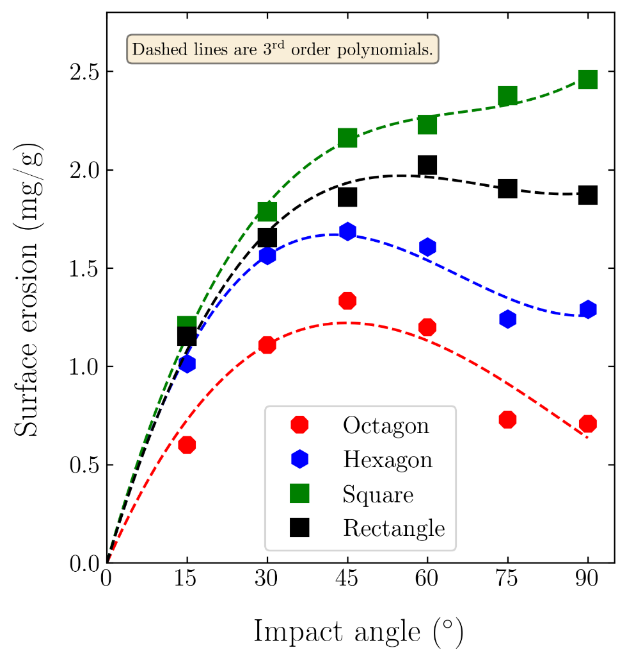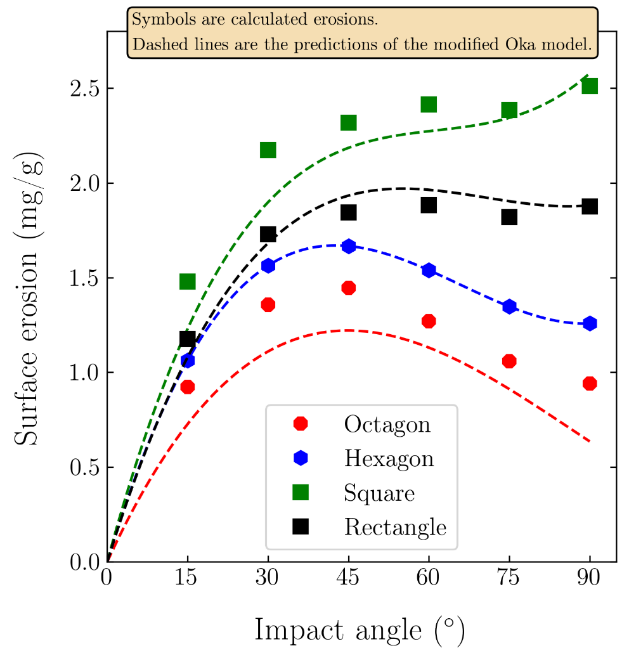Solid particle erosion
Introduction
Solid particle erosion (SPE) is a repetitive process that causes material removal from a surface due to solid particle impacts. It happens wherever solid particles, e.g., sand, metallic particles, or food products, are carried in a conveying system by liquids or gases. Several industries, such as energy producers, pharmaceutics, and chemical engineering employ conveying systems. SPE may cost these industries a fortune by damaging conveyors, which requires regular maintenance and sometimes brings about substantial harm to the system due to total failure of parts. Therefore, by estimating erosion in conveying systems, one can optimize operating conditions in order to attain better designs and parts, for longer lifetimes, and to reduce maintenance and production costs.
The task
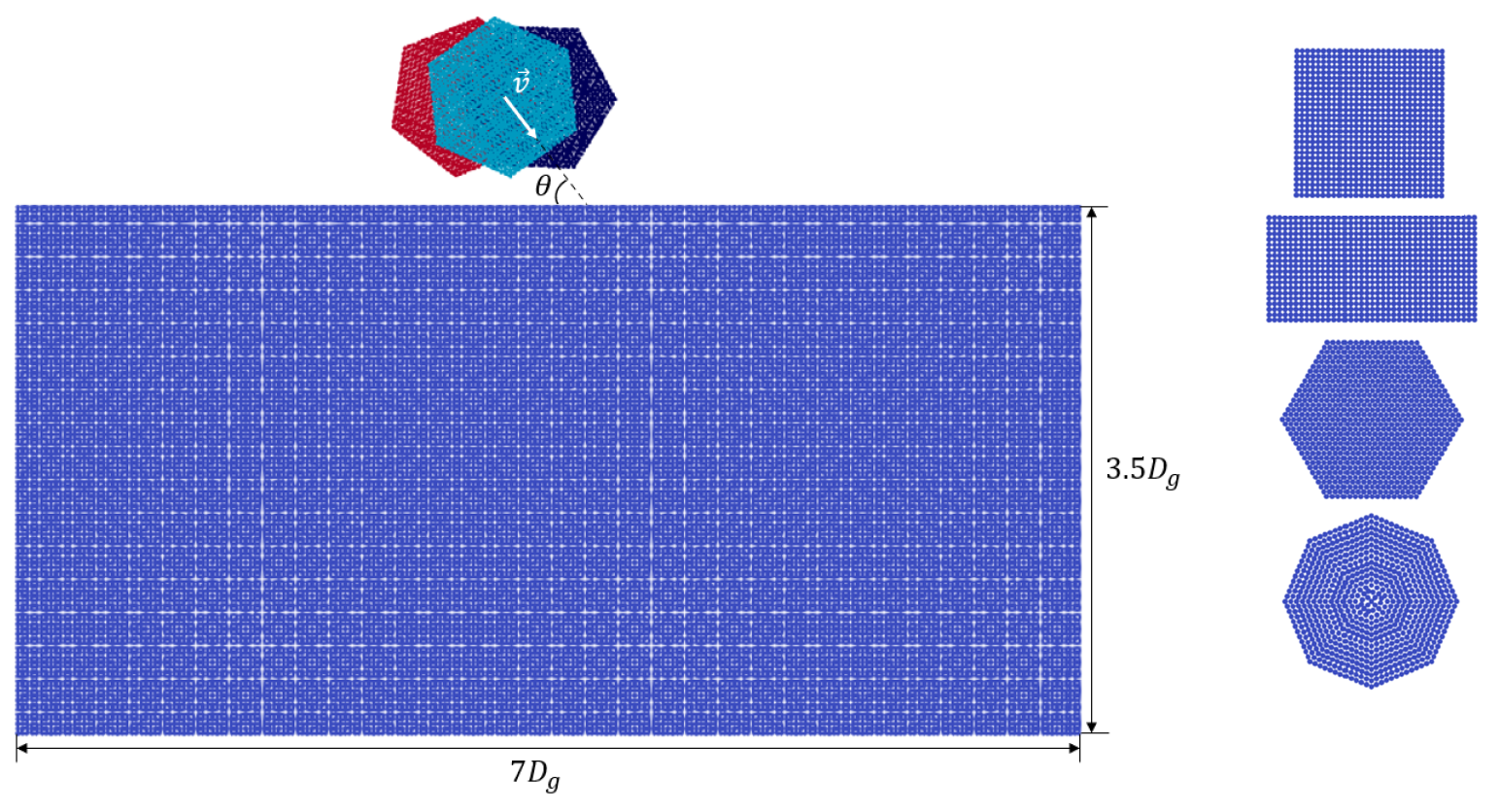
Predicting the SPE of conveyors mainly involves two fields of studies. First, the study of the mechanisms of solid particle impacts. Second, the study of the dynamics of particulate flow that is defined by the geometry of conveyors and hydrodynamics of carrier fluids. Commonly, these two topics are connected by using an erosion model in a coupled scheme between computational fluid dynamics (CFD) and the discrete element method (DEM). Erosion models are theoretical or empirical models that define the surface mass loss due to a single particle impact, depending mainly on the impact velocity and the impact angle of particles that are calculated by a CFD–DEM simulation.
In this use case, we aim to numerically predict erosion behavior of ductile materials. For this reason, we employ smoothed particle hydrodynamics (SPH) to model SPE of stainless steel AISI 304. Interactions between the carrier medium and solid particles are disregarded which is a valid assumption when the carrier medium is air and the solid particles are large and, thus, the momentum of the carrier medium can be neglected in comparison to the momentum of the particles. Solid particles are treated as rigid bodies and modeled by clumped sets of SPH particles that move and rotate together. We set out to develop a numerical methodology in order to get reliable predictions of erosion at different impact angles. To obtain this goal, we ensure that the simulated impacts can statistically represent all possible impacts. The model shown in the figure (left) is employed in this study. The numerical methodology is then used to study the effect of the particle shape which is one the most overlooked key parameters in literature. The particle shapes shown in the figure (right) are considered.
Results
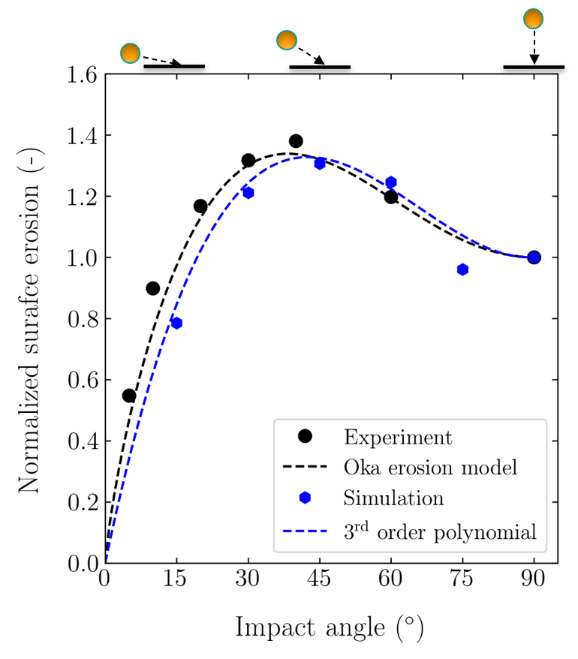
It is well known that surface erosion varies with impact angle. Therefore, in order to predict the erosion behavior of the surface, erosion is calculated for different impact angles from 15° to 90° with 15° intervals. The proposed numerical methodology to study surface erosion is based on the material removal of an ensemble of single particle impacts with the same velocity but at different impact angles. For each impact angle, several different realizations of a surface are considered. For each realization several successive impacts of single particles are modeled. Particles are randomly positioned and oriented by generating a new set of random values for each series of impacts per surface realization. By using this methodology, we make sure that all possible impacts and impact interactions are reliably captured. The methodology is tested by simulating surface erosion of stainless steel AISI 304. The comparison between the obtained results and experiments shows a very good agreement in terms of surface erosion behavior (see figure).
Next, the methodology is employed to study the effect of solid particle shape on surface erosion (see figure). Four different particle shapes are used. Particle shapes are characterized by their angularity and aspect ratio. The effect of particle shape is typically included in erosion models by a measure of roundness (sphericity). However, it turns out that surface erosion is also a function of particle elongation that affects the rotational behavior during an impact and, hence, the actual material removal. The results show that surface erosion increases with increasing angularity and decreases with increasing aspect ratio.
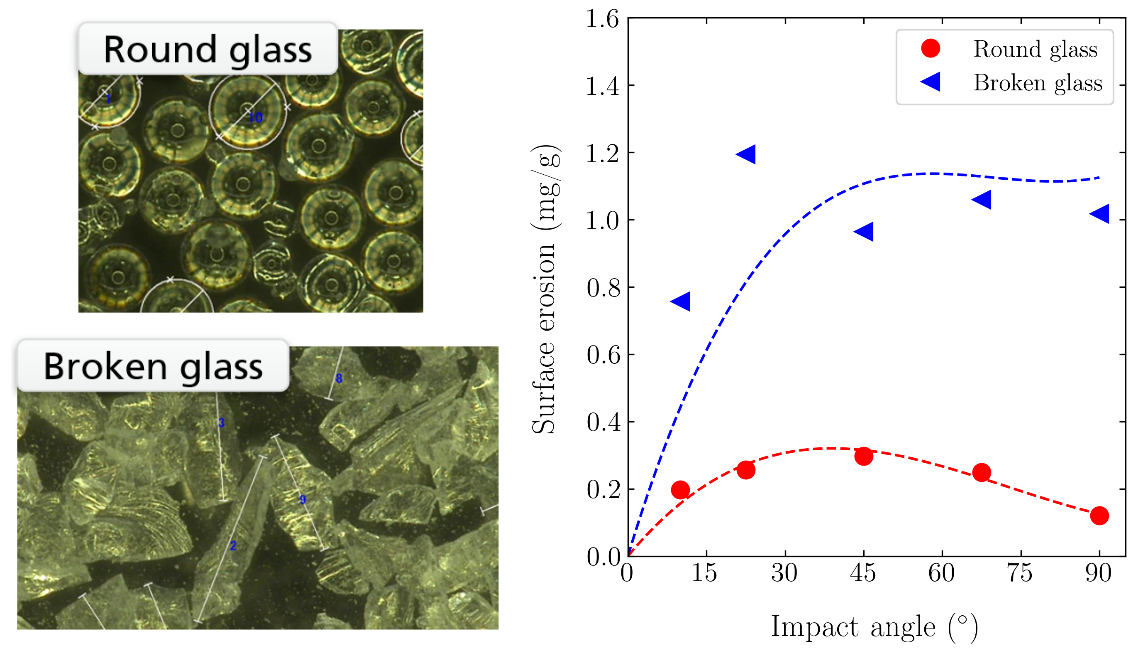
Additional experiments are carried out at Fraunhofer IWM to measure surface erosion of stainless steel AISI 304 for round glass beads and broken glass particles which have high aspect ratio and angularity (see left figure). The obtained results are shown in the right figure. The surface erosion behavior for round glass particles is similar to the numerical results obtained for octagonal particles which have the lowest angularity and aspect ratio of the tested shapes. The surface erosion for the broken glass particles, on the other hand, shows a behavior closer to the numerical results obtained for particles with high angularity and aspect ratio such as rectangular particles.
We then formulate our findings as a modification term added to a widely used erosion model to explicitly include the effect of the particle shape. The modification is a function of angularity, aspect ratio and impact angle. The predictions of the modified erosion model are compared with numerical results (see figure). The comparison shows a good agreement indicating that our modification is able to properly describe the effect of the particle shape.
 Fraunhofer Institute for Mechanics of Materials IWM
Fraunhofer Institute for Mechanics of Materials IWM